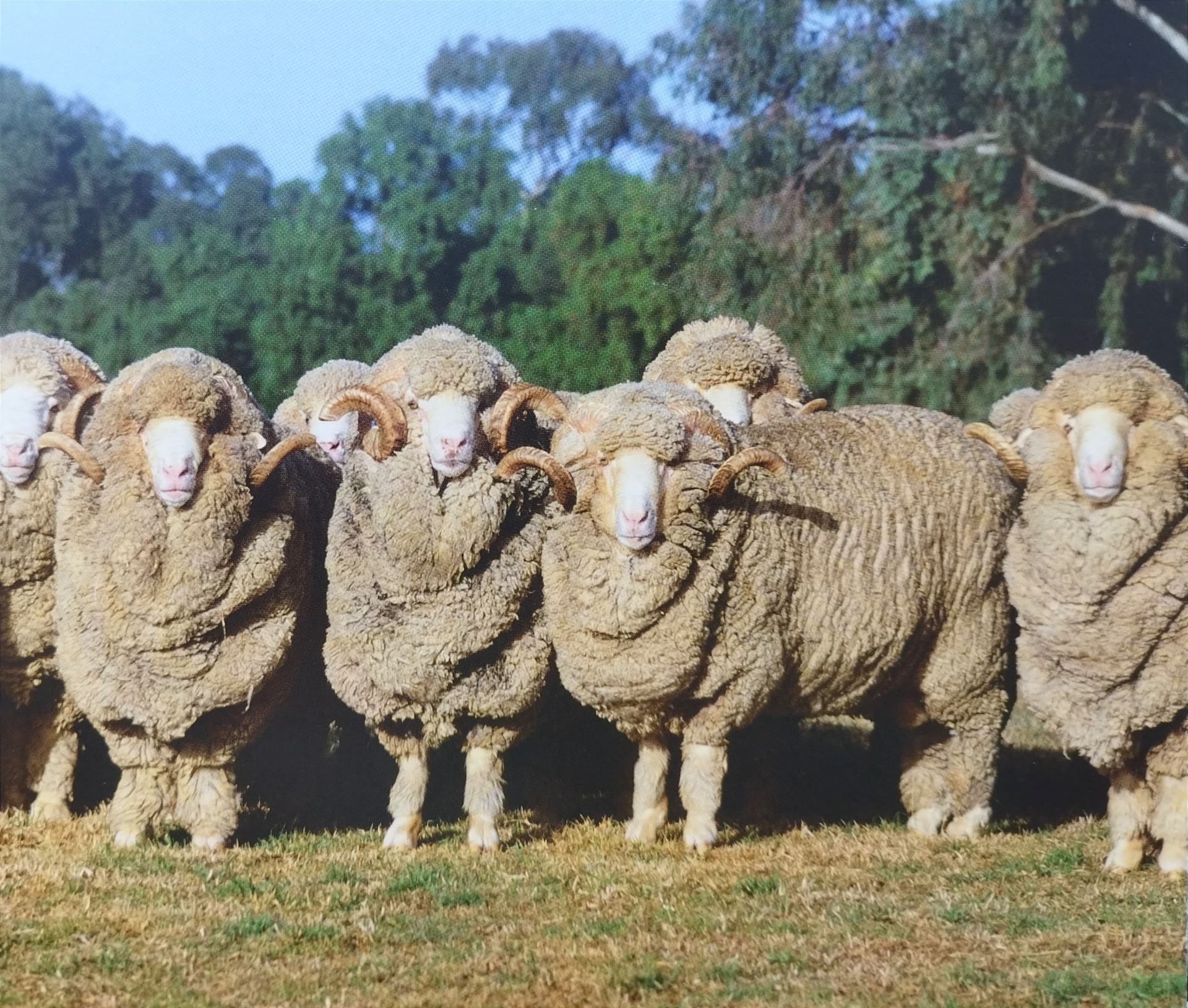BREEDSPECIFlC WOOL MERINO - SOFT, COMFORTABLE, BUT WITH HIGH ENVIROMENTAL PRICE

Merino wool is a great topic nowadays, therefore we were looking forward to writing about it. In comparison with local slovak breedspecific wool, we do have quite a specific opinion about the high demand for the merino softness. It is not all rosy and peachy, that feels soft to touch!
Merino wool, renowned for its luxurious softness and exceptional quality, has gained immense popularity in the global textile industry. Hailing from the Merino breed of sheep, this remarkable wool possesses numerous desirable characteristics. In this article, we will explore the wonders of Merino wool, while also examining the downsides associated with its production and its impact on the global market.
Merino sheep come originally from North Africa, but it was Spain, who bred it to "perfection" and in 13th century they raised sheep with the softest wool in the known world. For several centuries, Merino sheep were solely a spanish commodity and it was forbidden, under the penalty of death, to export them. However, with spreading of Habsburgs over the Europe, Merino sheep spread as well, being often a royal gift. During the next centuries, Merinos spread all over the world, finding ideal conditions in warm arid climates.
Why merino wool is prized:
Softness: Merino wool stands out for its unparalleled softness against the skin. With fibers measuring just 17 to 25 microns in diameter, it is significantly finer than traditional wool, making it exceptionally gentle and comfortable to wear. Its natural elasticity ensures garments made from Merino wool offer a superior fit and freedom of movement.
Breathability and Moisture Management: One of the most remarkable qualities of Merino wool is its inherent breathability. The fibers possess a unique structure that allows for effective moisture absorption and release, keeping the wearer dry and comfortable in varying climates. It can absorb up to 30% of its weight in moisture without feeling wet, making it an ideal choice for active outdoor enthusiasts.
Temperature Regulation: Merino wool acts as a natural insulator, providing warmth in cold conditions and keeping the body cool in warmer weather. Its unique thermal properties help regulate body temperature by trapping air within the fibers, providing exceptional comfort in all seasons.
Odor Resistance: Unlike synthetic materials, Merino wool has natural antimicrobial properties that inhibit the growth of odor-causing bacteria. This quality allows garments made from Merino wool to remain fresher for longer, even after prolonged use.
Downsides and Challenges:
Cost: Merino wool, due to its exceptional quality and desirable characteristics, tends to be more expensive compared to other types of wool or synthetic fibers. The meticulous breeding, care, and shearing processes involved in producing high-quality Merino wool contribute to its higher price point.
Environmental Impact: The global demand for Merino wool has led to concerns regarding its environmental impact. Large-scale Merino farming requires significant land and water resources. Additionally, the use of chemicals in sheep dip and other treatments can have adverse effects on ecosystems if not managed responsibly.
Animal Welfare: Merino sheep are bred for their fine wool, which requires regular shearing. However, unethical practices, such as mulesing, have been a subject of controversy. Mulesing involves removing strips of skin around the sheep's buttocks to reduce the risk of flystrike. The industry has made efforts to address this issue and promote more humane practices.
Long lasting breeding: Merinos have been bred for several hundred years, with the finest, heaviest and densest fleeces in mind. This also results in the animals being a wee "over-bred" and very susceptible to illnesses and parasites. Much about Merinos is unfortunately about the high demand and gains, and that is never the best reason why to raise sheep.
Diminishing value of other local breedspecific wools: Due to global market, merino wool is very available in all corners of the world. People tend to prefer its softness to any other type of wool, which results in transporting merino wool across the world, while disposing of almost all local wool as coarser and therefore less valued. This is an enormous reason of our strive for reviving slovak wool.
Low durability: As any soft fiber, merino wool is not very durable. It is very important to see this fibre as one of the possibilities of using wool and decide, where to use it. Its proper place is in more delicate items for wearing next to skin, or for sensitive skin - e.g. children garments, outdoor and laundry garments, scarves and shawls worn around the neck. On the other side, wherever you need textiles, that will last, merino is not a good choice. It can pill more than any other fiber (and sooner) and is sensitive to abrasion. It also felts very fast - which is a good thing for felters, but not for maintenance :-)
The Global Market and Sustainability Efforts:
Merino wool enjoys a prominent position in the global textile market, with demand stemming from various industries, including fashion, sportswear, and outdoor gear. Recognizing the environmental and animal welfare concerns, sustainable and ethical certifications, such as the Responsible Wool Standard (RWS) and the ZQ Merino program, have emerged to ensure the welfare of sheep and sustainable farming practices.
Merino wool has rightfully earned its reputation as a soft and luxurious fiber with remarkable properties. Its exceptional softness, breathability, moisture management, and temperature regulation make it a coveted choice for diverse applications. However, the production and global market of Merino wool come with challenges that must be addressed to ensure environmental sustainability and the welfare of animals. By supporting responsible sourcing and sustainable practices, we can continue to enjoy the benefits of this extraordinary material while mitigating its potential downsides and fostering a more conscientious global market. Last, but not least, let us not forget all other types of wool (and all the different projects that can be made of it!) only because there is the softest one!
